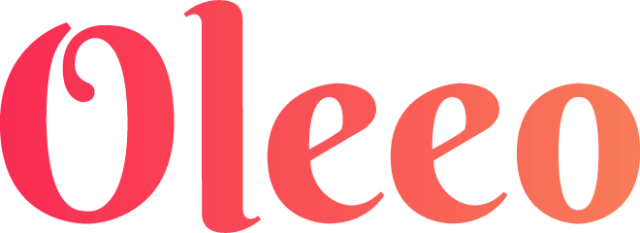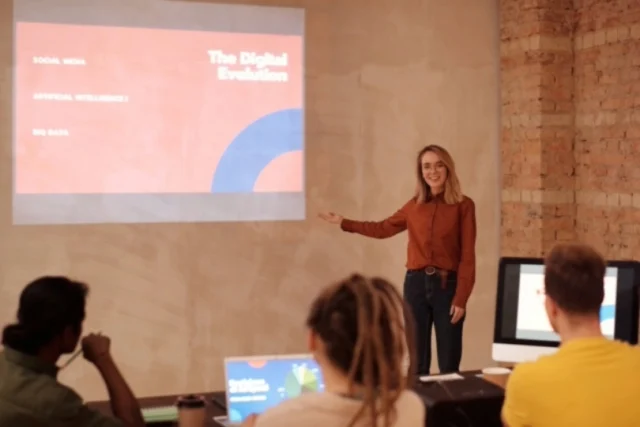15 Types of Bias in Recruitment and How to Remove Them From the Hiring Process

Bias is ingrained in human nature, serving as a tool for processing the intricacies of everyday life. We instinctively organize information into mental compartments or categories, which materialize as generalizations, stereotypes, attitudes, and associations. These mental constructs are influenced by our individual beliefs, values, and life experiences, shaping how we engage in social and professional settings. But, do you ever consider bias in recruitment?
Unchecked biases can cloud our judgment and hinder our ability to make fair decisions. Recruiters, hiring managers, and others involved in the hiring process must recognize potential biases that could lead to unfair exclusions. False impressions of candidates can form not only during the initial review of applications but also long before a job opening is announced, impacting the fairness of the entire hiring process.
While it has been proven time and time again that diverse and inclusive teams are more effective than teams with the same experiences and perspectives (they Generate More Revenue, Make Better And Faster Decisions, Drive More Innovation), many employers have still made little progress with diversity and inclusion. According to Gartner, less than 40% of recruiters say their function has implemented a diversity and inclusion strategy.
In this article, we will focus on everything you need to know about recruitment bias, equipping your business with the knowledge to recognize and reduce all types of bias in your hiring process. We’ll also reveal examples of bias in recruitment. Let’s begin.
What is Recruitment Bias?
Recruitment bias refers to the unfair or prejudiced treatment of candidates during the hiring process, leading to the favoring of certain individuals or groups over others. This bias can come across in different ways, often unconsciously, and can significantly impact the fairness and diversity of hiring outcomes.
Conscious bias
Conscious bias, or explicit bias, refers to the deliberate prejudices or attitudes that individuals hold and act upon. Conscious bias involves clear, self-aware discriminatory thoughts or behaviors based on certain characteristics such as race, gender, age, religion, or other attributes.
Conscious bias includes:
-
Intentionality: The biased actions or decisions are made knowingly and deliberately.
-
Awareness: The individual is aware of their prejudices and the discriminatory impact of their actions.
-
Overt behavior: Manifestations of conscious bias are often overt and can include explicit statements,
-
actions, or policies that favor or disadvantage certain groups.
Examples of conscious bias in recruitment and workplace settings might include:
-
Discriminatory hiring practices: Deliberately choosing not to hire candidates from certain racial or ethnic backgrounds.
-
Unequal opportunities: Providing fewer opportunities for advancement or development to employees of a certain gender or age group.
-
Hostile work environment: Engaging in or tolerating harassment or discriminatory behavior toward certain groups.
Conscious bias can lead to significant ethical, legal, and reputational issues for organizations. Addressing conscious bias involves strict enforcement of anti-discrimination policies, promoting a culture of diversity and inclusion, and ensuring accountability for discriminatory actions through training, monitoring, and corrective measures.
Unconscious bias
Unconscious bias, or implicit bias, refers to the automatic, unintentional, and often subconscious attitudes or stereotypes that affect our understanding, actions, and decisions. These biases are shaped by our background, cultural environment, and personal experiences and can influence how we perceive and interact with others without our conscious awareness.
Unconscious bias includes:
-
Involuntary nature: Unconscious biases operate automatically and outside of our conscious control.
-
Pervasiveness: Everyone has unconscious biases, a natural part of human cognition and decision-making.
-
Influence on behavior: These biases can affect our judgments, behaviors, and interactions in subtle ways that we may not realize.
We will look at some examples of unconscious bias in recruitment later.

When Does Hiring Bias Occur?
Hiring bias can happen at various stages of the recruitment process. Let’s look at some common places where you may see bias:
1. Job description creation
Biased language or requirements in job descriptions can deter diverse candidates from applying. For instance, using gendered language or overly specific qualifications not related to the actual job performance can be exclusionary.
2. Sourcing and advertising
Bias can influence where and how job openings are advertised. Relying on certain networks or platforms that lack diversity can limit the pool of candidates.
3. Resume screening
Bias may arise when reviewing resumes if decisions are influenced by factors such as the candidate’s name, educational background, or previous employers. This can result in overlooking qualified candidates from diverse backgrounds.
4. Interview process
During interviews, biases can affect how questions are framed, how responses are interpreted, and how candidates are evaluated. Factors like appearance, accent, or cultural background may unintentionally influence interviewer judgments.
5. Assessment and testing
Bias can be present in the design and implementation of tests and assessments if they are not validated for fairness and do not account for diverse experiences and backgrounds.
6. Decision-making
Unconscious biases can significantly influence final hiring decisions, often without the decision-makers realizing it. This can lead to the unfair exclusion of qualified candidates from diverse backgrounds.
7. Reference checks
Bias can also occur during reference checks if the feedback from references is influenced by their own biases or if the hiring manager interprets the information in a biased way.
8. Onboarding and integration
Even after hiring, biases can affect the onboarding process, influencing how new employees are welcomed and integrated into the team.
Why Should Unconscious Bias Hiring Be Addressed?
Removing unconscious bias in recruitment and selection is crucial as it ensures fairness in hiring, promoting equity and inclusivity. Reducing bias in hiring also helps attract and retain a diverse workforce, enhancing creativity and innovation. Moreover, it fosters an inclusive workplace, improving morale and retention. Diverse teams drive better business outcomes and enhance reputation.
Reducing bias in the recruitment process also ensures legal compliance and mitigates risks. Simply put, tackling unconscious bias creates a more equitable, inclusive, and successful workplace.
D&I is not just a set of tactics. It’s a strategy that, when successfully implemented, can create a significant business impact.
Diverse and inclusive workforces are:
-
More profitable: McKinsey studies found that the profitability difference between the fourth and first quartile of performers due to executive-level diversity was +21% for gender diversity and +33% for ethnic diversity.
-
More likely to perform better: CEB research found that gender-diverse and inclusive teams outperformed gender-homogenous, less inclusive teams by 50%.
-
More innovative: Research published in Harvard Business Review found that more diverse companies deliver 19% higher average innovation revenue.
What Are the Dangers of Recruitment Bias?
Businesses are often proud of their workplace diversity initiatives; however, recruitment bias’s hidden danger is its potential to restrict candidate options, undermining the hiring process’s inclusivity and fairness. Here are some of the risks of bias in recruitment.
-
Possible legal ramifications: Recruitment discrimination based on protected characteristics such as race, gender, age, disability, or religion can lead to lawsuits and legal liabilities. Organizations found guilty of discriminatory hiring practices may face fines, legal settlements, and damage to their reputation.
-
Poor brand image: Bias in recruitment can tarnish an organization’s reputation as an employer of choice. Negative publicity surrounding discriminatory practices can damage the organization’s brand image, resulting in decreased trust and credibility among potential candidates and existing employees.
-
Discourages top-tier talent from seeking employment: When candidates perceive bias in the recruitment process, they may be deterred from applying to the organization. Top talent may opt for employers with reputations for fairness and inclusivity, leading to a loss of qualified candidates and a less competitive talent pool.
-
Increases turnover: Recruitment bias can result in poor hiring decisions and mismatches between employees and roles. When individuals feel undervalued or excluded due to bias, they may be more likely to leave the organization, resulting in higher turnover rates and increased recruitment costs.
-
Sales fall: A lack of diversity in the workforce can limit the organization’s ability to understand and connect with diverse customer demographics. This can hinder innovation, creativity, and market responsiveness, ultimately impacting sales and revenue growth.
-
Absence of diversity: Recruitment bias can spread across the workforce, leading to a lack of diversity in perspectives, experiences, and ideas. This limits the organization’s ability to innovate, problem-solve, and adapt to changing market demands, ultimately affecting your long-term success and sustainability.
What Are the Benefits of Unbiased Recruitment?
Implementing unbiased recruitment practices encourages a workplace culture that prioritizes diversity and inclusivity, thereby strengthening your capacity to attract and retain top-tier talent. Here are some of the advantages of reducing bias in your recruitment process.
-
Diverse talent pool: By removing biases, you attract candidates from various backgrounds, skills, and experiences, enhancing the talent pool’s diversity.
-
Enhanced innovation: Diverse teams bring different perspectives and ideas to the table, encouraging creativity and innovation within the organization.
-
Improved company reputation: Companies committed to unbiased recruitment are viewed positively by job seekers, employees, and the public, enhancing their reputation as inclusive and fair employers.
-
Better employee retention: When employees feel valued and respected regardless of their background, they are more likely to stay with the company, reducing turnover rates.
-
Compliance with regulations: Unbiased recruitment practices ensure compliance with anti-discrimination laws and regulations, mitigating the organization’s legal risks.
-
Higher performance: Diverse teams tend to outperform homogenous ones, benefitting from a wider range of skills, perspectives, and problem-solving approaches.
-
Broader market reach: A diverse workforce better represents and understands diverse customer demographics, leading to improved customer relations and market insights.

15 Types of Bias in Recruitment
Recruitment biases come in diverse forms, just as people do. To address hiring bias—particularly unconscious bias—HR professionals must understand the types of biases they may encounter. Let’s focus on the types of bias in recruitment.
Affinity bias in recruitment
Affinity bias in recruitment occurs when individuals tend to favor candidates who share similar backgrounds, interests, or experiences.
Example of affinity bias in recruitment:
-
Hiring managers may feel more comfortable and connected to candidates who remind them of themselves.
This bias is very subtle, and candidates who do not fit this mold may be overlooked, regardless of their qualifications or potential for success.
Confirmation bias in recruitment
Confirmation bias is a cognitive bias that happens when individuals seek out or interpret information in a way that confirms their existing beliefs or hypotheses.
Example of confirmation bias in recruitment:
-
Hiring managers or interviewers unconsciously focus on information that aligns with their initial impressions of a candidate while disregarding or downplaying contradictory evidence.
Suppose a hiring manager forms a positive opinion about a candidate based on their resume or initial interview. In that case, they may unconsciously seek out additional information that supports this perception, such as positive feedback from references, while overlooking any negative indicators. This can result in biased decision-making and the reinforcement of preconceived notions, leading to the selection of candidates who may not be the best fit for the role.
Contrast bias in recruitment
Another cognitive bias, contrast bias, plays a significant role in recruitment processes. This bias is when individuals evaluate candidates based on comparisons with others rather than objective standards.
Example of contrast bias in recruitment:
-
If a hiring manager interviews a highly qualified candidate after meeting with mediocre candidates, they may perceive the highly qualified candidate as exceptionally better. In the same way, interviewing a less qualified candidate after interacting with outstanding ones may lead to a disproportionate negative assessment of the less qualified candidate.
Such biases can distort judgments, leading to the potential overlooking of qualified candidates who don’t meet the inflated expectations set by previous interactions.
Gender bias in recruitment
Gender bias in recruitment remains a persistent challenge, often influencing hiring decisions in subtle yet impactful ways. This bias is when individuals hold preconceived notions or stereotypes about the abilities, characteristics, or suitability of candidates based on their gender.
Example of gender bias in recruitment:
-
Women are sometimes perceived as less competent or assertive than men, leading to their underrepresentation in certain roles or industries. Gender bias can come across in the language used in job advertisements, with masculine-coded language inadvertently deterring female applicants.
Gender biases can cause disparities in the workforce, limiting opportunities for women and contributing to the gender pay gap and glass ceiling phenomenon.
Name bias in recruitment
Name bias in recruitment is where hiring managers make assumptions or judgments about a candidate based solely on their name. Research has shown that individuals with names that are perceived as belonging to certain racial or ethnic groups may face discrimination in the hiring process.
Example of name bias in recruitment:
-
Studies have found that candidates with traditionally “white-sounding” names are more likely to receive callbacks for job interviews compared to those with names perceived as belonging to minority groups.
This bias can significantly impact the opportunities available to candidates and cause inequalities in the workforce.
Halo and horns effect in recruitment
The halo and horns effect in recruitment refers to the tendency for hiring managers to allow one candidate’s positive or negative trait to overshadow their overall evaluation.
Example of the halo and horns effect in recruitment:
-
When the halo effect is at play, a single impressive quality or achievement can lead to an overly positive perception of the candidate, influencing the hiring decision. In the same way, the horns effect occurs when a single negative trait or flaw leads to a disproportionately negative assessment, regardless of the candidate’s other qualifications.
This kind of bias can significantly impact hiring outcomes, as it may result in the overlooking of qualified candidates or the selection of unsuitable ones based on superficial impressions rather than a comprehensive evaluation of their skills and experiences.
Racial and ethnic bias in recruitment
Racial and ethnic bias in recruitment refers to the prejudice or discrimination that candidates face based on their race or ethnicity during the hiring process.
Example of racial and ethnic bias in recruitment:
-
Differential treatment in screening, interviewing, or selection decisions, leading to disparities in employment opportunities for individuals from marginalized racial or ethnic groups.
Research indicates that candidates from minority racial or ethnic backgrounds may encounter obstacles in accessing job opportunities, facing higher rates of rejection or lower offers compared to their counterparts with similar qualifications but from dominant racial or ethnic groups.
Racial and ethnic bias not only leads to systemic inequality in the workforce but also undermines efforts to foster diversity and inclusion in organizations.
Sexual orientation bias in recruitment
Sexual orientation bias in recruitment refers to discrimination or prejudice against candidates based on their sexual orientation during the hiring process.
Examples of sexual orientation bias in recruitment:
-
Overt discrimination
-
Implicit bias
-
Microaggressions
Research indicates that LGBTQ+ candidates may face obstacles in accessing job opportunities, experiencing higher rates of rejection or workplace discrimination compared to their heterosexual counterparts. LGBTQ+ individuals may also feel compelled to conceal or downplay their sexual orientation during the recruitment process to avoid discrimination, leading to feelings of discomfort or inauthenticity.
Age bias in recruitment
Age bias in recruitment refers to the discrimination or prejudice that candidates face based on their age during the hiring process.
Examples of age bias in recruitment:
-
Overt ageism
-
Implicit bias
-
Stereotyping
Research suggests that older candidates may encounter obstacles in accessing job opportunities, facing higher rates of rejection or workplace discrimination compared to younger counterparts. In the same way, younger candidates may face challenges related to lack of experience or perceived maturity. Age bias can also influence recruitment decisions, with some employers favoring candidates from specific age groups based on assumptions about skills, adaptability, or cultural fit.
Automation bias in recruitment
Automation bias in recruitment refers to the tendency for hiring professionals to rely excessively on automated systems or algorithms when making hiring decisions, leading to biased outcomes.
Example of automation bias in recruitment:
-
Recruiters or hiring managers place undue trust in the recommendations or rankings generated by recruitment software without critically evaluating the underlying data or considering other factors relevant to candidate selection.
Suppose an automated system ranks candidates based solely on keywords or criteria that inadvertently favor certain demographics or backgrounds. In that case, it can cause bias and discrimination in the hiring process.
Automation bias can also arise when recruiters overlook qualified candidates who may not meet specific algorithmic criteria, leading to missed opportunities for diversity and inclusion.
Religious bias in recruitment
Religion bias in recruitment refers to the prejudice or discrimination that candidates face based on their religious beliefs or affiliations during the hiring process.
Examples of religious bias in recruitment:
-
Overt discrimination
-
Implicit bias
-
Stereotyping
Candidates who visibly display their religious affiliation through attire or practices may face bias or scrutiny from hiring managers, impacting their employment opportunities. Religious bias can influence recruitment decisions, with some employers favoring candidates from specific religious groups based on assumptions about cultural fit or values alignment.
Conformity bias in recruitment
Conformity bias in recruitment occurs when hiring professionals align their judgments and decisions with their peers or colleagues rather than independently evaluating candidates based on merit.
Example of conformity bias in recruitment:
-
This happens in group settings, such as hiring committees or panel interviews, where individuals may feel pressure to conform to the opinions or preferences of the majority. Qualified candidates who differ from the ‘norm’ or consensus may be overlooked or undervalued in the recruitment process.
Conformity bias can hold back diversity and innovation in hiring decisions, as it may lead to homogeneity and discourage dissenting viewpoints or alternative perspectives.
Beauty bias in recruitment
Beauty bias in recruitment is when individuals are judged or treated favorably based on their physical appearance during the hiring process.
Example of this bias:
-
Preferring candidates who conform to conventional standards of attractiveness or perceiving attractive candidates as more competent or qualified for the role.
Research suggests that individuals considered physically attractive may receive preferential treatment in recruitment, including higher interview ratings, more favorable evaluations, and increased job offers. In the same way, candidates who do not meet societal beauty standards may face discrimination or bias, leading to reduced opportunities for employment.
Proximity bias in recruitment
Proximity bias in recruitment is when a hiring team favors candidates who are geographically close to the hiring location or share similar backgrounds or experiences.
Examples of this bias:
-
Recruiters prioritize candidates who live in the same city or region as the company headquarters, assuming that proximity equates to commitment or suitability for the role.
-
Hiring managers prefer candidates who attended the same schools, worked at familiar companies, or have similar social connections.
As a result, candidates from distant locations or diverse backgrounds may face barriers or disadvantages in the recruitment process, despite possessing relevant skills and qualifications.
Disability bias in recruitment
Disability bias in recruitment is the prejudice or discrimination that candidates with disabilities may face during the hiring process.
Examples of disability bias in recruitment:
-
Overt discrimination
-
Implicit bias
-
Systemic barriers that limit opportunities for individuals with disabilities to access employment.
-
Candidates with disabilities may encounter challenges related to stigma, misconceptions, or stereotypes about their abilities, leading to negative perceptions or biases from hiring professionals.
-
Inaccessible recruitment processes or job requirements may inadvertently exclude candidates with disabilities.
How to Avoid Bias in Recruitment: 8 Best Practices
It is completely natural to use heuristics in decision-making, but it’s essential not to rely solely on them for hiring decisions. Want to know how to eliminate bias in recruiting and selecting applicants? Make your hiring process structured and objective with these best practices:
-
Team awareness: Be aware of unconscious hiring biases within your team and address them.
-
Train your recruitment team: Ensure your hiring managers receive proper interview training that includes common hiring biases.
-
Diverse hiring panels: Involve a diverse group of interviewers to provide varied perspectives and reduce individual biases.
-
Blind recruitment: Remove identifying information (e.g., name, gender, age) from resumes and applications to focus on skills and qualifications.
-
Decision-making: Base hiring decisions on evidence rather than subjective assumptions.
-
Transparency: Maintain consistency and transparency in your hiring process.
-
Standardized interviews: Use a standardized interview guide and ask every candidate the same questions.
-
Continuous monitoring: Regularly review and analyze recruitment processes and outcomes to identify and address potential biases.

Oleeo Diversity Recruiting Platforms Help Identify and Reduce Recruitment Bias at Your Business
As the saying goes, “If you don’t measure it, you can’t improve it.” Understanding where you’re at and what steps you can take is crucial for tackling recruitment bias. Consider things like:
-
How diverse is your hiring process?
-
Do diverse candidates drop out more frequently?
-
Are they turned down more often?
-
Does this vary based on who’s hiring or what the job entails?
Keeping an eye on our Diversity Recruiting results and tracking trends over time provides valuable insights. With this information, you can fine-tune your Diversity Recruiting strategy and get everyone on board with your plans and initiatives. See how our Diversity Recruiting Platforms can lend a hand.
FAQs about Bias in Recruitment
Why do structured interviews mitigate bias better than unstructured interviews?
Due to their standardized format, structured interviews mitigate bias more effectively than unstructured interviews. This format ensures that all candidates are assessed using the same set of predetermined questions and evaluation criteria. This consistency minimizes the influence of subjective judgments and personal biases, leading to fairer and more reliable assessments of candidates’ qualifications and suitability for the role.
Structured interviews also allow for easier comparison of candidates’ responses and performance, enabling recruiters to make more informed hiring decisions based on merit rather than unconscious biases.
What role does technology play in increasing diversity in recruitment?
Technology plays a crucial role in increasing diversity in recruitment by simplifying blind recruitment techniques and anonymizing candidate information to mitigate unconscious biases. AI-powered applicant tracking systems also help analyze job descriptions for biased language and ensure inclusive postings.
Tools enable data analytics to monitor and address biases in recruitment processes while also supporting diversity-focused outreach initiatives to attract a broader range of candidates.



